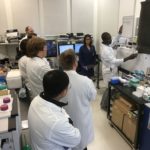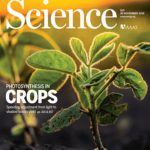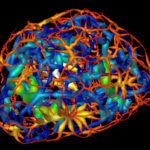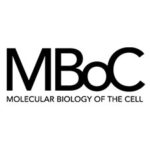Tapping the DNA synthesis expertise of the DOE Joint Genome Institute (JGI), a team from the Max-Planck-Institute (MPI) for Terrestrial Microbiology in Marburg, Germany has reverse engineered a biosynthetic pathway for more effective carbon fixation. Read more at JGI News.
Crop Yield Gets Big Boost with Modified Genes in Photosynthesis
Plant biologists have bumped up crop productivity by increasing the expression of genes that result in more efficient use of light in photosynthesis, a finding that could be used to help address the world’s future food needs. Scientists in the Molecular Biophysics & Integrated Bioimaging (MBIB) Division at Berkeley Lab, the University of California, Berkeley (UC Berkeley), and the University of Illinois targeted three genes involved in a process plants use to protect themselves from damage when they get more light than they can safely use. By increasing the expression of those genes, the scientists saw increases of 14-20 percent in the productivity of modified tobacco plants in field experiments. MBIB Faculty Scientist Kris Niyogi, who is a Howard Hughes Medical Institute investigator and a UC Berkeley professor of plant and microbial biology, teamed up with Stephen Long, a plant biology and crop sciences professor at Illinois, for the Science study. Read more at the Berkeley Lab News Center.
3-D Imaging Technique Maps Migration of DNA-carrying Material at the Center of Cells
Scientists in the Molecular Biophysics and Integrated Bioimaging Division (MBIB) have produced detailed 3-D visualizations that show an unexpected connectivity in the genetic material at the center of cells, providing a new understanding of a cell’s evolving architecture. A team of researchers, led by Carolyn Larabell, MBIB faculty scientist and professor at UCSF, have mapped the reorganization of genetic material that takes place when a stem cell matures into a nerve cell using X-ray imaging tools in the National Center for X-ray Tomography at the Advanced Light Source. The results could help us understand how patterning and reorganization of DNA-containing material called chromatin in a cell’s nucleus relate to a cell’s specialized function as specific genes are activated or silenced. Read more at the Berkeley Lab News Center.
Second Annual Software Developer Wet Lab Boot Camp Takes Place at JBEI
The training was targeted at Biosciences Area’s Software Developers
 JBEI hosted for a second year a wet lab boot camp targeted at software developers. Following last year’s success, the boot camp returned this time to include 10 software developers from across the Biosciences Area. It included participants from JBEI (Biological Systems & Engineering Division), Agile BioFoundry, DOE Joint Genome Institute (JGI) and Berkeley Lab and Sandia National Lab departments.
JBEI hosted for a second year a wet lab boot camp targeted at software developers. Following last year’s success, the boot camp returned this time to include 10 software developers from across the Biosciences Area. It included participants from JBEI (Biological Systems & Engineering Division), Agile BioFoundry, DOE Joint Genome Institute (JGI) and Berkeley Lab and Sandia National Lab departments.
ASCB Award Essays by Mina Bissell and Eva Nogales Offer Insights in Personal Journeys
In two American Society for Cell Biology (ASCB) award essays published in the society’s journal Molecular Biology of the Cell, Mina Bissell, distinguished scientist in the Biological Systems & Engineering Division, and Eva Nogales, faculty structural biologist in the Molecular Biologist in the Molecular Biophysics & Integrated Bioimaging Division, each candidly describe their inspiring, personal journeys.
- « Previous Page
- 1
- …
- 169
- 170
- 171
- 172
- 173
- …
- 213
- Next Page »
Was this page useful?







